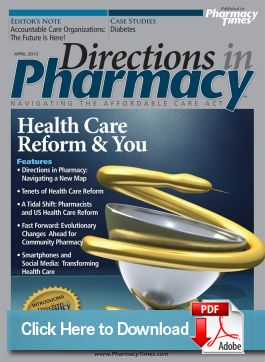Publication
Article
Pharmacy Practice in Focus: Oncology
A Pharmacy on Every Corner or Prescription Drug Costs on Every Phone?
Author(s):
Changes in purchasing behavior have immediate and long-term effects on health care costs for both individuals and employers.

Changes in purchase behavior have immediate and long-term effects on health care costs for both individuals and employers.
Shopping is everywhere in the United States. Just look around and you will see price check apps, extreme couponing, daily deals, and location-based coupons. Shopping has become the national pastime, with bragging rights going to those who can grab the best deal. Shopping is everywhere—until you buy a prescription drug.
The Catch
Most would-be shoppers purchase prescription drugs using insurance from their employer. Here’s the catch: most employer-sponsored prescription drug plans share costs between the employer and the individual using fixed copays.1 While simple in some respects, copays provide individuals with little indication of the actual cost of the drug. Copays usually result in either the individual or the employer paying the vast majority of the drug cost.
For example, the monthly copay for a generic drug such as atorvastatin 10 mg may be $15. With the actual cost of the drug at $14, the individual is paying 100% of the cost.2 In another example, the monthly copay for a brand drug such as Abilify 10 mg may be $65. The actual cost is $684 and the employer pays $620.3 The split is in the other direction, with the individual paying less than 10%. To add to the confusion, the cost-sharing tiers are determined by a lengthy formulary document which includes fine print on further restrictions such as prior authorization, step therapy, and quantity limits. Even though the patient purchases the drug at the pharmacy, they have very little idea of the actual cost.
For many people, getting a prescription boils down to 2 things: Which Pharmacy? and “The Surprise.”
Which Pharmacy? This is the big question from the physician when he/ she is e-prescribing the prescription. As patients are not shoppers, this boils down to a question of convenience. The pharmacy situated most conveniently between the physician’s office and the patient’s home gets the business. As a result, pharmacies have pursued an extensive strategy of geographic convenience to put a pharmacy on every corner.
The Surprise. Most people, including physicians, do not know what drugs cost.4,5 When a patient goes to pick up a drug-cost is often a surprise. Did I get the $15 or the $65 drug this time?
Consumer-Directed Health Care
Employers are moving rapidly to consumer-directed health plans (19% of plans in 2012) to shed cost and to make their employees more price sensitive. As people start spending their own money through high-deductible plans or higher copays, individuals start shopping. Shopping requires answers to more than just “Which Pharmacy?” and doesn’t work so well when there is a surprise on cost.
Here are some common shopping questions to be asked about prescription drugs
What’s the difference between the drug being prescribed and its therapeutic alternatives? How much am I willing to spend for the convenience of a once-a-day medication versus a twice-a-day medication? Is this strength/form being prescribed available on a $4 generic formulary?
Which pharmacy has a better price? Does its $4 program have extra fees? Does mail order make more sense? Is there a drive through or do I need to park and bring my kids inside?
Should I buy through the plan? What about purchasing outside the plan with a prescription discount cards or on a $4 generic plan? Should I use a manufacturer coupon or free samples?
A new class of mobile solutions is emerging to help consumers answer these questions and eliminate the cost surprise. With drug cost information accessible from your phone, individuals can start shopping. Changes in purchase behavior have immediate and long-term effects on health care costs for both individuals and employers. A single shopping decision to switch to a lower-cost drug can result in health care savings of more than $1000 a year for multiple years.
We are a society of shoppers, so let’s empower individuals with information and put their shopping skills to work to lower health care costs.
Dan Pollard, PhD, MBA, founded myDrugCosts with the vision to help individuals make cost-informed decisions about prescription drugs. Prior to myDrugCosts, Dr. Pollard spent 14 years in health care software product management driving innovation at health care IT companies such as Allscripts, Misys Healthcare, and MDeverywhere. Dr. Pollard earned his PhD in medical informatics as a National Library of Medicine fellow at Duke University. He also has an MBA from the Fuqua School of Business.
References:
- Employer Health Benefits 2012 Annual Survey. Kaiser Family Foundation. http://ehbs.kff.org/.
- Drug options - Atorvastatin. myDrugCosts. www.mydrugcosts.com/Drug/atorvastatin.
- Drug options - ABILIFY. myDrugCosts. www.mydrugcosts.com/Drug/abilify.
- Shrank WH, Asch SM, Joseph GJ. Physicians’ perceived knowledge of and responsibility for managing patients’ out-of-pocket costs for prescription drugs. Ann Pharmacother. 2006;40(9):1534-1540.
- Michael AG, Lexchin J, Wiebe N. Physician awareness of drug cost: a systematic review. PLoS Medicine 2007:E283.







